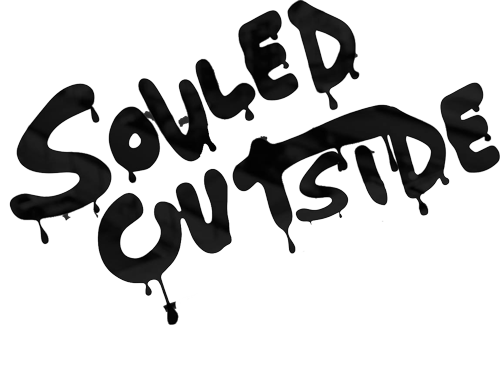Clayton Willams and Dirk Francisco pick me up on the edge of the Caribbean Sea. Two hours by road from the jungle lodge, I’m now holed up at a Belizean dive resort called Hamanasi. Williams and Francisco are here to show me their village. We set off in a dusty, Toyota SUV that was at one time painted silver.
“Ay the shocks on this vehicle still work?” Francisco laughs, as we bounce along the dirt road toward Hopkins Village—their hometown, my reason for being here. Francisco, who founded a local Facebook and Instagram page called Hopkins Uncut is the de facto publicist for the village of about 3,500. His page has become so popular that locals simply call him “Uncut” these days. Williams, unbeknownst to me, is a band leader who has traveled the world on the heels of his voice and the rhythm of local drums.
I’m about to get a first hand lesson in why.
The Garifuna
Scattered Maya villages still populated Belize by the time the Spanish arrived in 1519. Though the heyday of towering white cities was several hundred years distant, Maya culture here still persisted and survived. But not all Belizeans are linked to the Maya; not even close.
1,800 miles east of Belize, you’ll find the Caribbean island of St. Vincent. On a map, it’s just north of Venezuela. It was here that the story of the Garifuna people began. In 1635, two Spanish ships carrying indentured Nigerians wrecked near St. Vincent. The island population—already a blend of South American and indigenous Caribbean islanders, adopted the Nigerians and set the foundation of the Garifuna, a people who’s unique culture was peacefully created through generations of intermarriage among ethnic groups.
While this was happening, the entire region was hosting a high stakes game of cat and mouse played out by pirates searching for gold and Spanish galleons laden with the stuff. This was in the midst of an already complicated New World land grab by Spain, England, France, Portugal, and the Netherlands. The Garifuna, who simply wanted to live peacefully on their island, were perpetually under threat of enslavement by European powers; and so, they began to move around the region.
By 1832, that movement took them to Belize, to the area where Hopkins Village now sits.

The band
“Welcome to Hopkins Village, where people drive both ways down a one lane road,” chuckles Uncut. Here, paved surfaces are rare, and people take advantage of the chance to get off of the dirt when they can, even if it’s on a one way street. Nobody seems to mind.
Our Toyota rolls to a stop on the edge of short fence. Its panels are painted black, white, and yellow. “The colors of the Garifuna people,” Uncut blurts. “I”m trying to get them to brand it.” This is Laruna Hati Diner, a roadside dive perched just a few feet from the surf.
The band is already waiting when we arrive under the thatched roof outdoor bar. There’s Williams, the vocalist and the leader. Ronald, his younger brother, provides the bass line on a segunada drum. Rayton mans the primero drum (the Garifuna version of a lead guitar), and Toots provides the rhythm with the maracas. The band isn’t complete without Oddesta, who doubles as the bartender and the band’s dancer.
With a quick intro from Uncut, the band is ready to rock.
In seconds, I begin to see why Belize considers itself to be more Caribbean than Central American.
The music isn’t the watered down, steel drum stuff you hear on a cruise ship in the Bahamas or by the pool at a Miami hotel. It has a definite soul and purpose that’s all its own. It’s more African than Spanish, but there are definitely hints of Latin America as well. The band plays three songs, some of which you can hear on CD Baby.
Here’s a look at Clayton at work. This day, we were minus the guitar.
Naturally, the ruckus begins to a draw tourists out from another bar area at the diner. Before long, we’ve started an actual party. The fact that none of the tourists can dance as well as Oddesta, or that I’m a subpar substitute on Ronald’s segunada drum doesn’t really matter. It’s all about the spirit of joy.
The Garifuna are exceptionally optimistic people. Upon arrival here in 1832, they simply proclaimed, “This will be our new country!” And for the most part they seem to have made that happen. I ask Toots and Rayton, both 19 and a good decade younger than the rest of us, if they’d like to leave Hopkins one day. I tell them that I’m from a small town, and that a lot of people want to leave.
“This is home,” they agree. “This will always be home.”
We grab a few Belikin beers to sit and talk about home.
Everyone agrees that Hopkins Village is changing. As we speak, utility workers are busy installing the town’s first fiber optic internet. “10 megs for $50 a month,” Uncut explains. “That sounds like a lot for you guys, but for us that’s super fast.”
The internet has already changed Hopkins Village. Growing up, Williams says he’d have to go to bandmates houses and hope they were home in order to practice. Now, he just texts them. Facebook is big here. Uncut has a more sophisticated Nikon camera than I do. And instead of socializing in person with games of hop scotch or marbles, or building toys out of beach debris, Uncut says kids are talking on Facebook about the latest fashion trends.
Everyone is on Instagram. And there’s no denying the impact of modern resorts on the edge of town.

Hopkins Village
But not all of that change seems bad. Hamanasi Resort, where I’m staying for the next two days, was built about 20 years ago. It joined a smattering of backpacker hostels and bars like the Funky Dodo and Ella’s Cool Spot, and brought divers to a village that was previously known as a fishing outpost. Divers undeniably opened a new revenue stream for the people of Hopkins Village; and along with bird watchers and casual beachgoers, the small but vibrant resort business here has brought an influx of foreign interest and money into the Garifuna’s home. That said, the place is as eco-friendly as it gets. You won’t find so much as a plastic shampoo bottle at Hamanasi. Even those are made of wood.
You will find the Garifuna. “We are a very unique culture,” Williams adds, from behind a local Belikin beer. I order another round for the band, and Oddesta brings us a mix of ales and stouts. The vocalist continues. “We have our own music. We have our own food. We are always together, and we are all about togetherness. It’s a very rich and unique culture. Garifuna.”
As this conversation is happening, a fishing boat passes by offshore. The captain is another of Williams’s brothers. Always together, indeed.
If you go to Hopkins, Belize, you won’t find much development. Not yet. For now, the future hasn’t changed this place beyond recognition. The resorts rely on ecotourism, and have an active interest in preserving the environment. The tourists come to see that environment, and the people of Hopkins prosper from the resorts—though like almost any proud people, they prefer them to be locally owned.
Hopefully, finally, the Garifuna people have a relationship with outsiders that can be positive for all.
You can get to Hopkins from the U.S. by hopping a two hour jet from Houston into Belize City, a 20 minute bush plane into Dangriga, and a 40 minute car ride into Hopkins. There, you will find your own seaside treehouse, or maybe just a bunk in a hostel. You will find a few dirt roads, and a door that opens to the home of Clayton Williams and Hopkins Uncut.
I encourage you to go.










